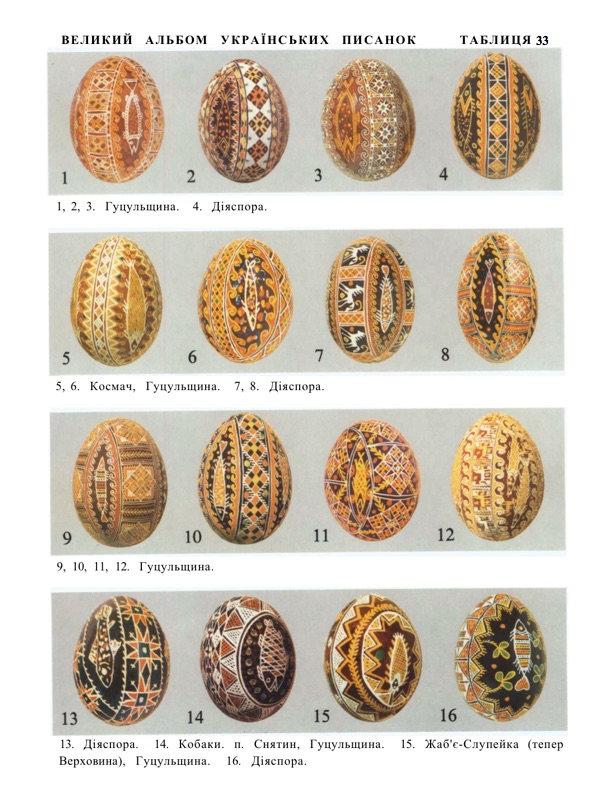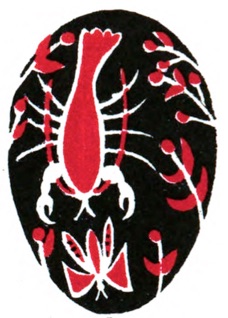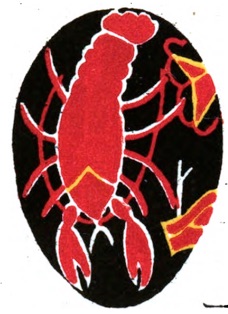Fish Motifs

Piscine Pysanky

The fish motif is relatively common on traditional in Carpathian areas, where zoomorphic motifs are most commonly seen. It is an ancient symbol of life, health and fertility. Pagan cultures associated the fish with vigilance. Fish feature often in Ukrainian folk tales; in many stories, a fish assists the hero in his quest.
In more recent times, the fish has taken on Christian meanings, as, in the christian tradition, the fish is a symbol of Christ. It was an early christian symbol, and had become quite popular by the 2nd century AD, and may have been adapted from pre-christian religious imagery (Orpheus was said to be a “fisher of men,” and other gods had fish imagery associated with them). According to tradition, ancient Christians, during their persecution by the Roman Empire in the first few centuries after Christ, used the fish symbol to mark meeting places and tombs, or to distinguish friends from foes.

Another explanation is that ΙΧΘΥΣ (Ichthys) is a acrostic for "Ἰησοῦς Χριστός, Θεοῦ Υἱός, Σωτήρ", (Iēsous Christos, Theou Yios, Sōtēr), which translates into English as "Jesus Christ, Son of God, Saviour."
The fish once represented abundance; the modern Christian interpretation is of Christ himself.
Traditional fish motifs found on Ukrainian folk pysanky are fairly simply, elongated creatures. There may be eye markings, fins, a tail. They may have some spots or stripes.

Diasporan (non-traditional) fish motifs tend to be more ornate and geometrically complex, as would be expected with their decorative, rather than talismanic, origins:

Traditional fish motifs are found most commonly on pysanky of the Carpathian mountain regions: among the Hutsuls, Pokuttians, Bukovynians, where they are being written still. (Below: Hutsul pysanka collected by Ivan Balan).

Selivachov notes that they can be found in other regions as well: eastern Podillia and Kyivshchyna (Nemyrivshchyna and Shuliavka). He points out that the latter “rybky” (little fish) look more like insects with wings and whiskers, or reptiles with three pairs of hooked feet. This Shuliavka “rybka” pysanka (L), taken from Kulzhynsky (Т X 1) definitely does not look particularly “fishy,” while this other example (R), also from Kulzhynsky (T XV 4), is from Nevmyrivshchyna, and has a fairly standard looking fish.


Still, if you want a pysanka with a fish motif, Hutsulshchyna, and in particular Kosmach, is the most likely place to find it. This is a single page from Elyjiw with fish motif pysanky:

(Note: Eggs 4, 7, 8, 13 and 16 are labelled “diasporan,” meaning that Elyjiw collected the designs outside of Ukraine and could not verify their authenticity.)
An interesting pysanka collected by Vira Manko is this one, Table 14, № 6:

This Hutsul pysanka from Kosmach is called «Пиранії», or “Piranhas.” She thinks it may have been named such by someone who’d spent time in Brazil and returned--or perhaps a Hutsul with a vivid imagination.
“Rak” -- Crayfish
A second type of fish motif found in Ukrainian folk art is that of the crayfish “rak” (рак). It is quite commonly found in Hutsul woodwork and in the morocco appliqué on the corners of their keptaryky (sheepskin vests), where it is a symmetric symbol with 4 to 8 extremities.
Selivachov has this to say about the rak symbol:
There are grounds to consider the “crayfish” (which walks back-to-front or sideways) a kind of amulet associated with “reverse” incantations, whose texts contain themes such as “walking without washing,” reading the Lord’s prayer back to front, beating about the bush rather than using roads.
The rak is uncommon on pysanky--except in “Galician Volhynia,” also known as the Sokal region. In the early 1900s, a fairly specific pysanka style developed there when local pysankarky applied motifs and techniques from china painting to pysanky. Freeform flowers, birds and even butterflies began to appear on their pysanky. Iryna Bilianska is probably the best known pysankarka of that era--her pysanky are floral jewels.

Isomorphic, rather than conceptualized, crayfish also began to appear on their pysanky. Korduba gives these two examples :


While these examples still fit into the spectrum of folk pysanky, they are fairly modern examples, and definitely outliers. They do not have any true symbolic significance, as the motifs do not date to the talismanic period of pysankarstvo. They are merely pretty eggs.





